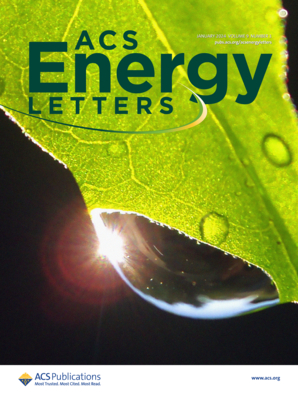Interlayer Cationic Defect Engineering in Lamellar Vanadate Cathodes Enables Ultralong-Lifespan Magnesium-Ion Batteries
IF 19.3
1区 材料科学
Q1 CHEMISTRY, PHYSICAL
引用次数: 0
Abstract
The rate performance and lifespan of rechargeable magnesium-ion batteries (RMIBs) are limited by the low ionic conductivity and poor structural stability of the cathode materials. Herein, we introduce interlayer cationic defect engineering to enhance the diffusion dynamics and structural integrity of vanadate cathodes for the RMIBs. Through interlayer Mg2+ doping, we synthesized a defect-engineered cathode material (d-MgNVO) that establishes optimized migration pathways. Lattice defects confine ionic migration within the vanadate framework and reconstruct short, rapid, and reversible migration pathways, increasing the Mg2+ diffusion coefficient to 10–11–10–13 cm2 s–1. The d-MgNVO cathode exhibits a capacity of 198 mAh g–1 at 0.05 A g–1 and 73 mAh g–1 at 3.0 A g–1, showcasing good rate capability; the PTCDA//d-MgNVO full cell achieves a long lifespan of 5,000 cycles at 1.0 A g–1 with 79% capacity retention. These findings highlight interlayer cationic defect engineering as a promising strategy for high-performance, long-lasting RMIBs and other secondary batteries.

求助全文
约1分钟内获得全文
求助全文
来源期刊

ACS Energy Letters
Energy-Renewable Energy, Sustainability and the Environment
CiteScore
31.20
自引率
5.00%
发文量
469
审稿时长
1 months
期刊介绍:
ACS Energy Letters is a monthly journal that publishes papers reporting new scientific advances in energy research. The journal focuses on topics that are of interest to scientists working in the fundamental and applied sciences. Rapid publication is a central criterion for acceptance, and the journal is known for its quick publication times, with an average of 4-6 weeks from submission to web publication in As Soon As Publishable format.
ACS Energy Letters is ranked as the number one journal in the Web of Science Electrochemistry category. It also ranks within the top 10 journals for Physical Chemistry, Energy & Fuels, and Nanoscience & Nanotechnology.
The journal offers several types of articles, including Letters, Energy Express, Perspectives, Reviews, Editorials, Viewpoints and Energy Focus. Additionally, authors have the option to submit videos that summarize or support the information presented in a Perspective or Review article, which can be highlighted on the journal's website. ACS Energy Letters is abstracted and indexed in Chemical Abstracts Service/SciFinder, EBSCO-summon, PubMed, Web of Science, Scopus and Portico.
 求助内容:
求助内容: 应助结果提醒方式:
应助结果提醒方式:


